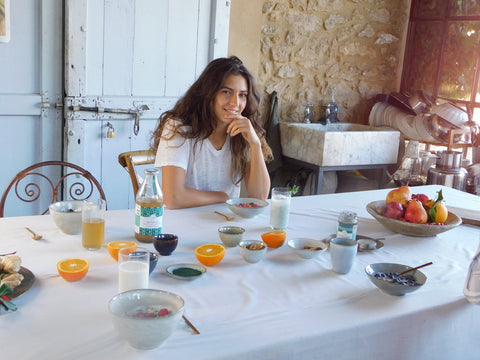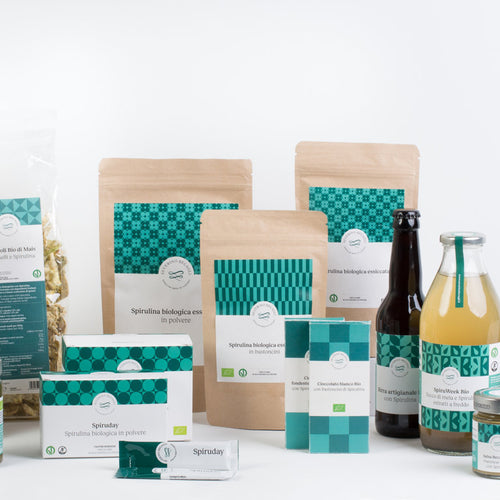How would you define your cuisine?
An innovative cuisine that does not forget tradition. Everything I propose starts from a memory, from what I started eating, the various subsequent experiences are contaminated with innovative ideas, but always with an eye on tradition.
How does Spirulina fit into this type of cuisine?
It is an ingredient that goes well with many types of preparation, from appetizers to desserts. It has a taste that gives dishes a particular effect, amplifies some perceptions and slows down others. Seaweed has always been used in cooking, to marinate certain foods, in doughs, in fillings: in this historical moment, however, there is a greater openness towards the use of different seaweeds in cooking. A trend that also paved the way for Spirulina.
Can you tell us about your Spirulina-based recipe?
“ Cappelletti with spirulina algae, cheese and pepper with mussel cream and candied lemon”. In this case, powdered Spirulina is added to the pasta mixture, which thus takes on a very natural green color, similar to that obtained with the use of spinach. The flavor of the seaweed pairs very well with the cheese and pepper filling, in a dish that plays entirely on the dialogue between sea and land. The cream of mussels, which are immersed in their base with tomato, parsley, oregano and marjoram, gives a sweet note, which is broken by the taste of Spirulina and balanced by the candied lemon. It is more the aesthetic side or the nutritional aspect of Spirulina that inspires your dishes. It is a series of factors that come together: the taste of Spirulina adds and does not take away from the dish, but rather helps to enhance the taste of some ingredients. But also from a nutritional point of view it adds something to the recipes. Furthermore, it lends itself to multiple uses, is easy to use and meets the ever-widespread demand for organic and lightness. It is extra attention towards the consumer, it represents added value for the dish. When preparing a dish, it is always taste that guides, but certainly also the concept of nature and the pleasant visual effect contribute to the success of Spirulina in the kitchen.
How long have you been in Florence? Is there a desire to experiment at the table in this city?
I have been in Florence, leading the kitchen of the Hotel Brunelleschi, since February 2017. I find it a welcoming city, as well as beautiful, I never get tired of walking the same route to go to work. As for the desire to experiment at the table, I find that today consumers are increasingly curious and prepared for new products. The web also helps in this, just as the birth of many organic shops has played its part. There is still a bit of amazement when Spirulina is included in the menu, but most customers have already tasted it or use it at home and are happy to find it in the restaurant. At the Hotel Brunelleschi we also use it for breakfast, in the yogurt smoothie with red fruits, to break the ice in the morning with those who are less familiar with Spirulina.







